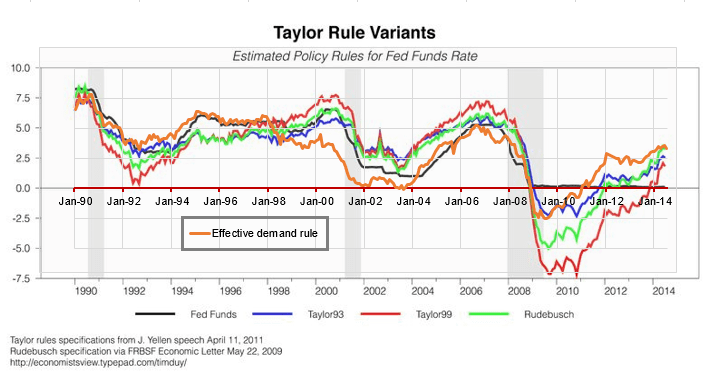Tim Duy posted a graph of various rules to determine the base nominal interest rate of the Federal Reserve. Here is the graph that he posted. (link)
The graph includes versions of the Taylor rule and the modified Taylor rule used by Glenn Rudebusch at the Federal Reserve Bank of San Francisco.
Now I will overlay my effective demand rule (orange line) on top of his graph. (link to equation)
The effective demand rule tracks a similar path to the other rules. The other rules use the output gap (Taylor) and the unemployment gap (Rudebusch). Since the output gap is prone to errors of measurement, the ED rule takes a different approach, by comparing the composite utilization of labor and capital against an effective labor share.
The ED rule assumed a 3.0% natural real rate up to the 2001 recession, a 2.5% natural real rate up to the crisis and a 1.8% natural real rate since the crisis.
Currently, the Rudebusch rule is giving the same Fed rate as the Effective Demand rule. They are all in positive territory roughly averaging 2.6%.
